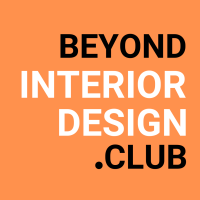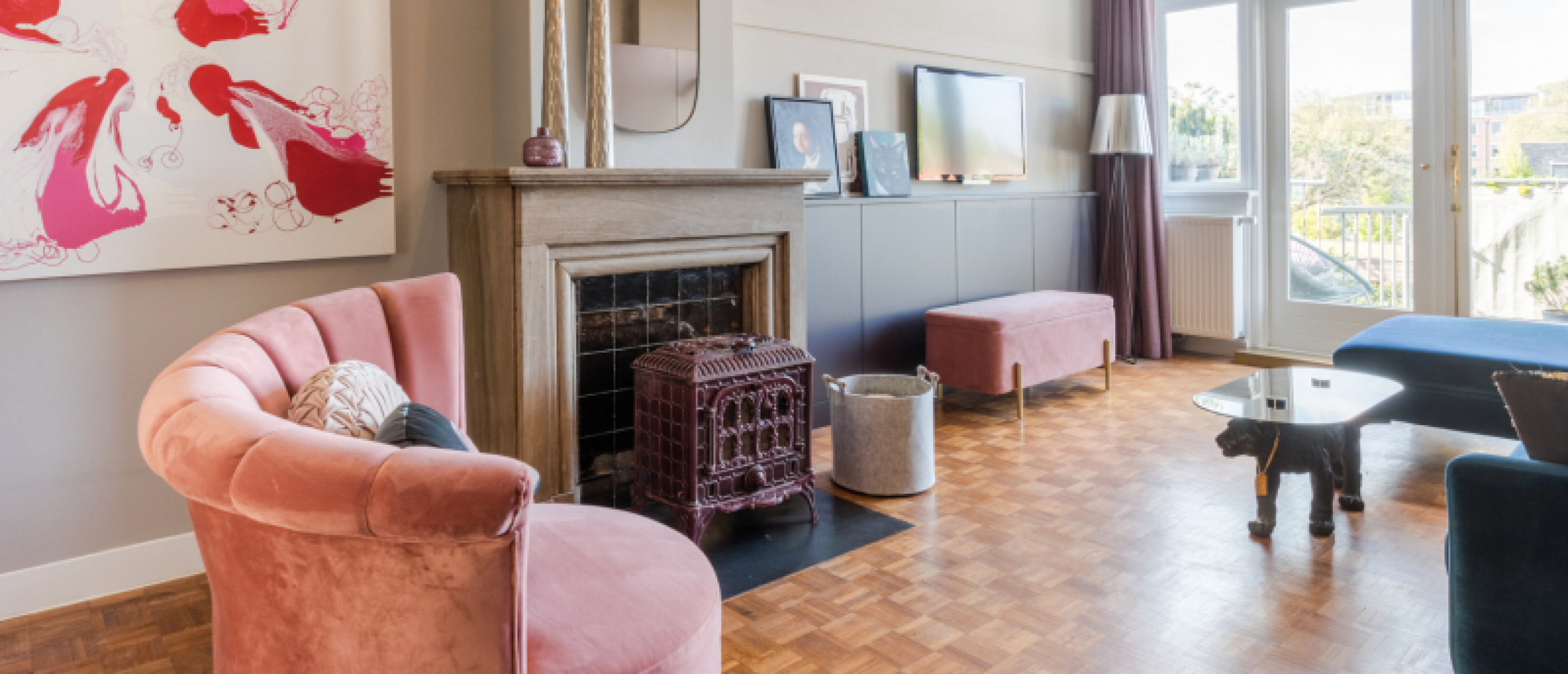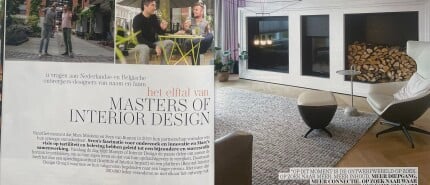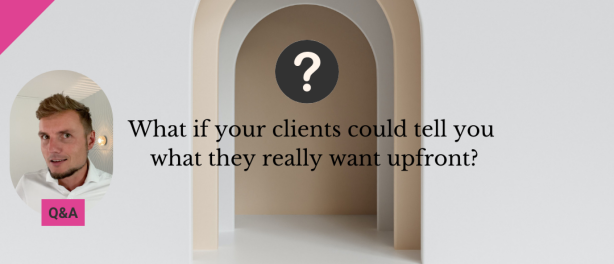As an interior designer, understanding your clients is crucial. This starts with asking the right questions. Here are 7 essential questions you should ask every client to ensure you fully understand their needs and expectations, allowing you to create a design that perfectly suits them.
1. What is your favorite moment of the day (or week)?
A standard question many designers ask is "where do you spend most of your time?" But that's not interesting. It's usually the bedroom, but they’re asleep there.
"If you look at the psychology of a happy life or enjoying your work, it’s all about moments."
Moments make people happy. Moments create memories. It’s about quality, not quantity. By asking about the best moment of the day or week, you can discover what is truly important to your client and how to enhance that in your design.

This way, you can create spaces that are not only functional but also contribute to the client's happiness and well-being.
2. Can you describe what 'home' (or work / hospitality / ...) means to you?
It's all about emotion.
We want to awaken the primal instinct. How do they want to feel at home? What kind of environment should you design to give them the ultimate experience?
By putting people in their emotional power while filling out a questionnaire, they start dreaming. And then a deeper layer emerges beyond just a superficially 'beautiful' interior. ![]()
This is where you can truly start realizing dreams!
Moreover, this allows you to tailor your design to the deepest desires and needs of your client, leading to a much more personal and meaningful result.
This applies not only to homes but also to business and hospitality spaces. Imagine designing a restaurant that evokes warmth and hospitality, or an office that stimulates productivity and creativity.
3. Where do you leave your keys / smartphone / etc.?
It's important to know how to design the right solutions for your client. This doesn’t just tell you if someone is organized, but also how they handle their daily routines.
If they often lose or leave things lying around, you need to provide solutions that help keep everything in its place, creating a tidy environment. 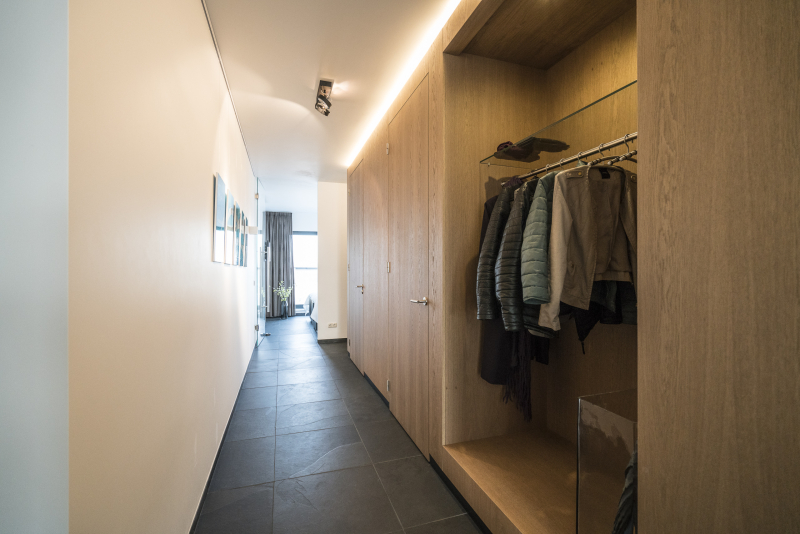
It's, of course, more than just the key or phone. It's about how they organize the kitchen, whether the counter is cluttered or not. Whether piles form on the dining table, sports bags lie around in the hallway, or clothes are thrown over the chair at night.
This information is also useful for hospitality designs, such as how guests are welcomed and guided to their table, and how storage areas are organized for efficient service.
By understanding these details, you can design a space that truly works for their daily life, leading to a more organized and stress-free environment.
4. Finish the sentence: My house feels too small when […]
This question reveals your interior design client's pain points regarding their current situation. It provides insight into which aspects of the space do not meet their needs and expectations.
Sometimes the house rarely feels too small, for example only during Christmas. The question then is, is it "too" small or just "small"? And if it is too small, what can you do to make it feel more spacious for those occasions? Or do they not really care? 
Especially the latter is important to know: How much do they care?
For offices, this also applies, especially now that more people work from home. Maybe it only feels cramped when hosting a large team or during meetings. It’s crucial to understand whether the problem is structural or incidental so you can offer suitable solutions that make a real difference. This helps in creating flexible workspaces that support both individual and group activities.
5. What is your budget?
A very important question. Also practical.
"You don't want them to fall in love with your design only to find out they can't afford it."
Many designers experience that they don't get a clear answer from their clients.
And there is a reason behind this. Because the client believes they you just spend the entire budget expensive stuff. Or in other words: they don't trust you! Therefore, clients prefer to hold back.
What often works is if a client doesn't give a budget, mention a high number: "Okay, so if the renovation costs €250,000, is that okay for you or too much?" They almost always wake up immediately: "No, we were thinking more like €100-150k." 
Tell them your goal is to help them and ensure they get a design they can afford and be happy with. You can steal this script:
"To make sure we create an interior design that fits your budget, it’s crucial for me to get an idea of your budget. It can be a rough estimate, but I need it to make a realistic design. It helps us choose the right materials, constructions and other solutions. I don't want to promise things I can't deliver. I’m not here to spend every single cent but to find a good balance between budget and design. To create something feasible without having to make cutbacks after cutbacks."
6. Finish the sentence: 'I would never hire an interior designer for my […]'
This question gives you insight into how the client values your services and which spaces they find important. If they say they would never hire a designer for the storage room or pantry, it may mean you haven’t clearly conveyed how good you are at designing those spaces.
Maybe clients say they would never hire a designer for the bathroom. Without mentioning the answer to this question when you meet them, adjust the conversation towards how the bathroom can be one of the most fun spaces to design. Because you spend relatively short periods there, it can often be decorated a bit more extravagantly. It's actually the showpiece. Or something like that.
But make sure, you don't mention their answer to this question, as otherwise you come over as defending or salesy.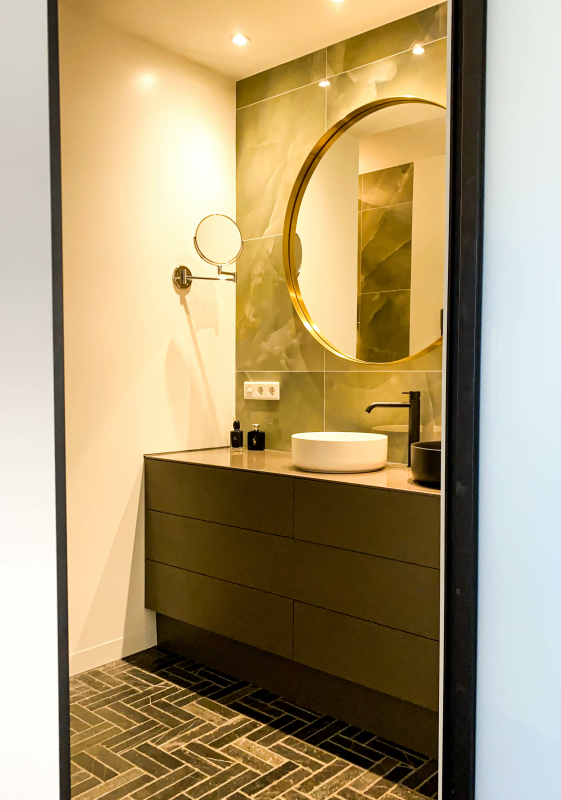
Words like: "If even the bathroom is perfect, then everything is." will often let them decide to not exclude the bathroom in the design project.
The thing is, although they might sound like they have a strong opinion about this, they don't. They have never given it any thought, and a few small words, will convince them your help is absolutely required here.
7. What is the first thing you're going to do when it's all finished?
A client never wants to deal with renovating, choosing colors, and picking furniture.
"If they could snap their fingers and have it all done, they would."
The only thing they care about is the end result. The life after you and the contractor have been there. By getting them to visualize what they will do when it's done, you create a connection with the end result.
They will usually say: the housewarming. Great, this is a good starting point! It's also an opening for a conversation about life once everything is finished. 
We once talked about the housewarming and the conversation shifted to children's birthdays and how fun and cozy they are. "But the preparations!" "I don't feel like hanging up streamers and making holes in my beautiful new plaster, I can’t stand the thought!" - those were their reactions.
So what did we do? The contractor installed small hooks in hidden places, accessible without a ladder, for hanging the streamers. We ordered high-quality, custom streamers, and now a birthday can be set up in 5 minutes. Solutions like this help clients truly appreciate their new space and enjoy their new life in it.
Get 23 other questions like this now and improve your client intake process. Download our free guide, The Ultimate Client Intake For Interior Designers, and start getting better clients, better projects, and more creative freedom. We share valuable tips and strategies to serve your clients even better. In the guide, we also explain exactly when and how to send the questionnaire for the best results.
